|
In the last Core Savvy Baseball™ article, we went over the things that Bryce Harper does to be successful at the Major League Level. Now we are going to take a close look at the most dominant force in the 9th inning in baseball history. THERE ARE FOUR PARTS OF RIVERA's DELIVERY THAT MAKE HIM SO SUCCESSFUL. MOST OF THE TIME THESE FOUR MOVEMENTS HAPPEN SO FAST, THEY GO UNSEEN. LET'S BREAK THEM DOWN.
A PITCHERS BALANCE IS THE MOST IMPORTANT PART OF A REPEATABLE DELIVERY. BALANCE ON THE MOUND IS CREATED AS RIVERA’S LEFT HIP DRAWS BACK AND COUNTER ROTATES. In the picture above, take a close look at Rivera's slight lean towards home plate at balance. This is exactly how you build momentum going towards home plate without have to jump at the hitter. Rivera's hands stay light and together throughout this forward momentum build up, which is crucial. I want to stress the fact that his hands stay together, and do not split during the momentum build up. At Core Savvy Baseball™ we call this a “rhythm split”™. While the majority of pitching coaches teach kids to split there hands down the middle, we disagree and know that splitting down the middle leads to elbow injuries and inconsistency. A inconsistent split leads us right into our next topic, symmetric hands. 2. Symmetric Hands : At CSB we firmly believe that Rivera has the best hands in the league. What do we mean best hands? To start, a pitcher's hands are his timing (see past pitching articles on absolutes of pitching). Symmetric hands, which should mirror each other, are the reason that Rivera can be so consistent with his hands. Symmetric hands equals great timing. For many youth players, feeling the weight of the baseball begins when they dig into there gloves. At Core Savvy Baseball, we call this mechanical flaw "getting violent too early". For Major League players, they do not feel the weight of the baseball until the very end of their delivery, much like they are cracking a whip. This will keep your arm light and injury free. In the picture above, Rivera’s hands are clearly still light and loose. As Rivera’s hands are light and loose, his shoulder will begin to rotate, bringing the hands up symmetrically. This is part of what allows him to have an injury free career. As Rivera's front foot begins to go forward and land, this sends us right into our next absolute, foot strike. 3. Foot Strike and Hip to Shoulder Separation : This is where the money is made. What you are looking at in the picture above is called hip to shoulder separation. Although we have briefly covered this idea in past articles, we have never discussed why hip to shoulder separation is so important. 90% percent of a pitcher's velocity is directly related to his hip to shoulder separation. You want to gain instant velo? Listen up. The most important part of getting a ton of hip to shoulder separation is getting your front foot down. As you can see above, Rivera's front foot is firmly planted on the ground which gives him the perfect foundation to build separation. As you can see above, Rivera's arm is laid back, and relaxed while his core begins to uncoil towards home plate. This is the definition of, and how you create a ton of hip to shoulder separation Many amateur pitchers will rush to throw the baseball before their front foot has landed. This will vastly eliminate hip to shoulder separation and is a red flag for elbow injuries. 4. The Tuck :
If you can remember to do just one thing mechanically correct as a pitcher, it should be your finish. A pitcher's finish occurs right after the baseball is released from the hand. Take a look at the picture above. Rivera starts the tuck by bringing his chest to his glove, instead of pulling down on his glove to create power. This is called “the tuck”. Pitchers should never focus on pulling the glove to create velocity because when we do, our arm will naturally drag and our symmetric hands will disconnect from each other. Rivera is exceptional at bringing his eyes towards his target which allows him to lock up on his target. This will help his tuck. The tuck is what allows Rivera to chest to extend as far as possible towards the target. The closer we can release the baseball to the hitter, the better. The longer we hold on to the baseball, the more revolutions we put on it, creating a more heavy or 'driven' pitch. You can see Mariano's chin reaching towards home plate as he tries to get his chest as far out towards the hitter as possible. Rivera clearly understands how important getting his chest and chin out towards the pitcher are. Stay tuned for the next article and keep the questions coming! [email protected]
0 Comments
Your comment will be posted after it is approved.
Leave a Reply. |
Core Savvy Authors : |
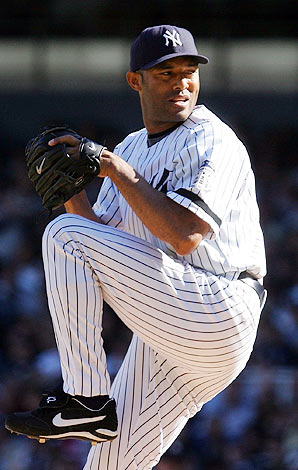
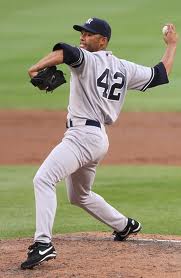
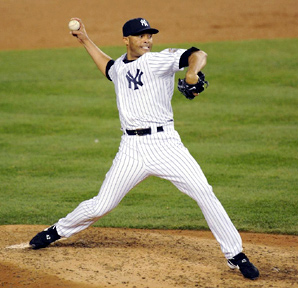
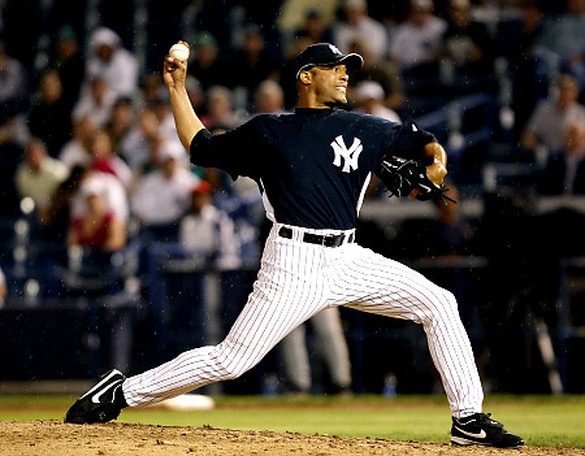
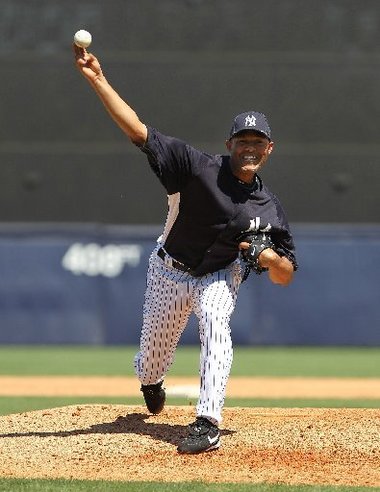
 RSS Feed
RSS Feed
